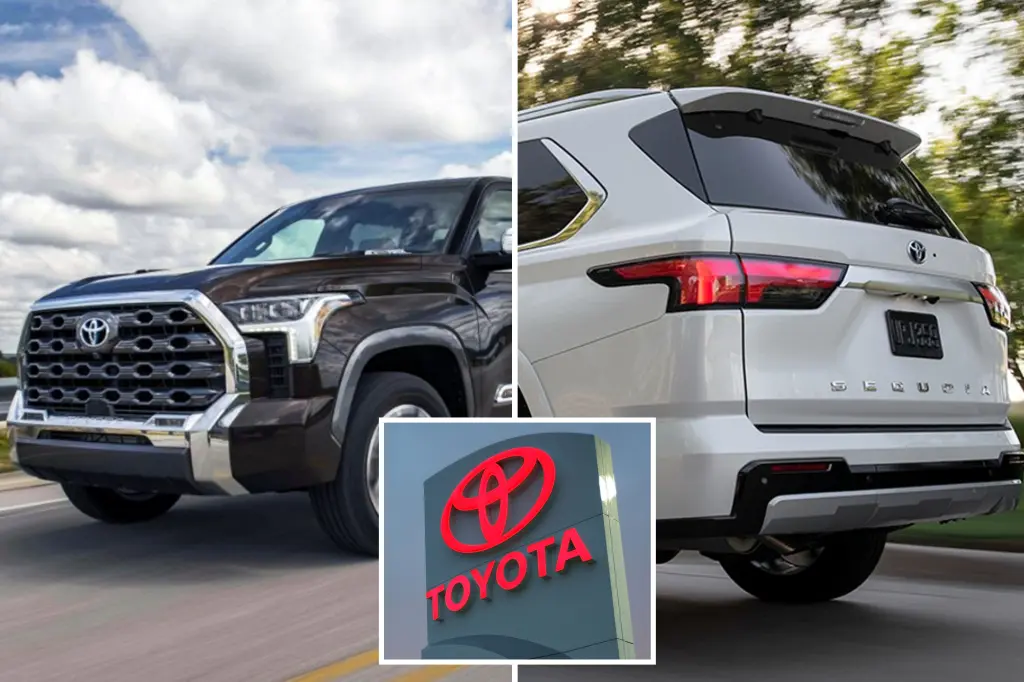Toyota Recalls Nearly 394,000 Vehicles Due to Rearview Camera Issues
Toyota is initiating a significant recall affecting almost 394,000 vehicles in the United States due to a software error that impacts the rearview camera functionality. This recall underscores the importance of reliable safety features in modern vehicles and Toyota’s commitment to addressing potential hazards promptly. The issue, which prevents the rearview image from displaying when the vehicle is in reverse, could significantly increase the risk of accidents by limiting drivers’ visibility behind their vehicles.
The affected models include certain Toyota Tundra and Tundra Hybrid vehicles from model years 2022-2025, as well as Sequoia Hybrid vehicles from model years 2023-2025. The National Highway Traffic Safety Administration (NHTSA) has identified that this software glitch causes these vehicles to fail compliance with Federal Motor Vehicle Safety Standard No. 111, specifically the “Rear Visibility” requirements. These standards were established to ensure that all vehicles provide drivers with adequate visibility when backing up, a crucial safety feature that helps prevent collisions with objects, other vehicles, or pedestrians that might be behind the vehicle and otherwise out of the driver’s line of sight.
Toyota’s response to this issue demonstrates the company’s dedication to customer safety. Vehicle owners will receive notification of the recall by mail starting around November 16, and Toyota dealers will update the multimedia display software at no cost to customers. This free software update should resolve the issue entirely, restoring full functionality to the rearview camera system and bringing the vehicles back into compliance with federal safety standards. Toyota has also made customer service representatives available to answer questions and provide additional information about the recall process, ensuring that vehicle owners have clear guidance on what steps to take.
This recent recall follows another significant Toyota recall from earlier this year, highlighting ongoing challenges in automotive technology reliability. Just months ago, Toyota recalled over 443,000 Tundra and Tundra hybrid trucks due to a fault in their reverse lights. That issue, while different, presented similar safety concerns as it potentially limited drivers’ rear visibility during low-light conditions and failed to properly signal to others that the vehicle was backing up. The proximity of these recalls might raise questions about quality control in Toyota’s newer models, though it’s worth noting that modern vehicles with advanced electronic systems naturally face more complex potential failure points than earlier automotive generations.
The importance of functioning rearview cameras cannot be overstated in modern vehicles. These safety features were mandated for all new vehicles sold in the United States starting in May 2018, precisely because they significantly reduce the risk of backover accidents. Before this technology became widespread, the NHTSA estimated that backover accidents caused approximately 210 deaths and 15,000 injuries annually in the United States, with children and elderly individuals being particularly vulnerable. Rearview cameras have helped reduce these incidents substantially, making their proper functioning a critical safety concern rather than merely a convenience feature.
For affected Toyota owners, this recall represents both an inconvenience and an important opportunity to ensure their vehicle’s safety systems are working properly. While scheduling service appointments and temporarily adjusting to potential limitations might be frustrating, the alternative—driving with compromised visibility—poses unnecessary risks to drivers, passengers, and others sharing the road. Toyota’s proactive approach to addressing this issue before major incidents occur demonstrates the value of recall systems in protecting public safety. As vehicles continue to incorporate more complex technology, both manufacturers and regulatory agencies must remain vigilant in identifying and addressing potential safety concerns before they result in accidents or injuries.















